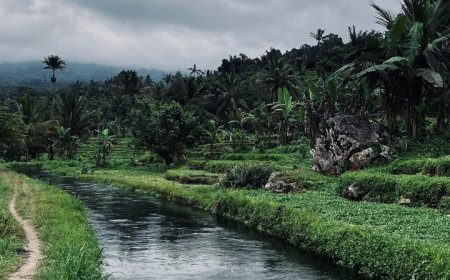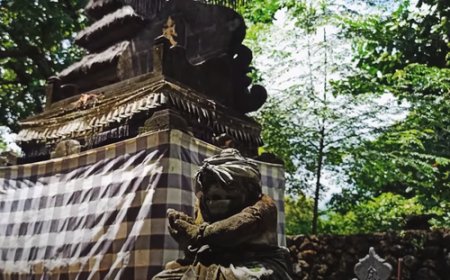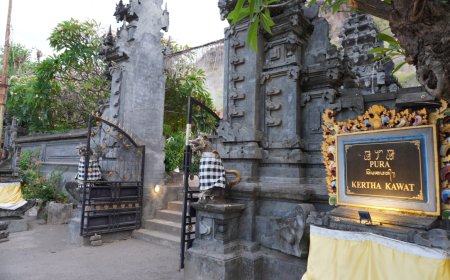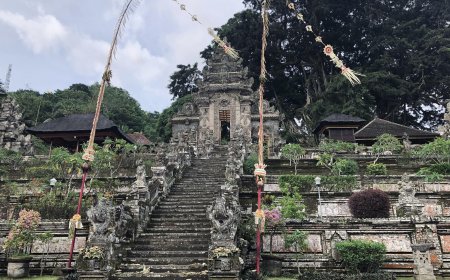Silayukti Temple: Masterpiece of Mpu Kuturan in Bali
Mpu Kuturan's very important role for Hindus in Bali is illustrated by his expertise in designing and building temples. The figure of Mpu Kuturan is also closely related to the Luhur Silayukti Temple in Padangbai, which is not only recognized as a place of meditation, but also as a place to achieve moksha for Mpu Kuturan.
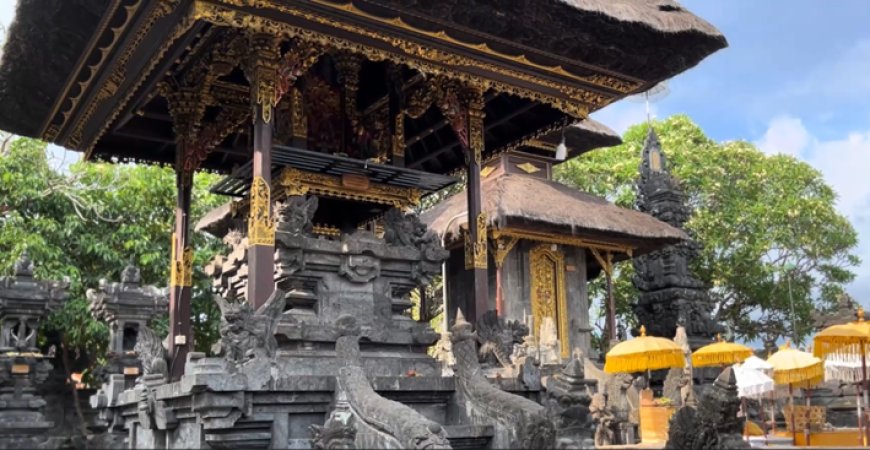
Silayukti Temple (Source: Private Collection)
Silayukti Temple is one of the Dang Kahyangan Temples in Bali. This temple is located on a hill in the eastern part of Padangbai Village. This temple is believed to be the shrine of Ida Batara Mpu Kuturan, a figure who was very instrumental in organizing the socio-religious life of the Balinese people around the 11th century AD. The word Silayukti comes from the words "sila" which means basis and "yukti" which means right when combined to form the basis of truth, so that those of you who pray in this holy place truly uphold the truth, in accordance with religious teachings.
Silayukti Temple is located in Padangbai Village, Manggis District, Karangasem Regency. This temple was built on land and juts out into the sea facing south, to the north stands a noble mountain, then to the west Padangbai Bay or Padangbai Harbor. Getting to the temple is easy, because the road to the temple grounds is good. Silayukti Temple is located at an altitude of around 50 meters above sea level.
Pujawali or odalan at Silayukti Temple every 6 months (every 210 days), according to the Balinese calendar, coincides with Buda Kliwon wuku Pahang. During the pujawali or piodalan at Silayukti Temple, many Hindus come to pray, because of the lack of vehicle parking, sometimes pilgrims have to use the Padang Bai pier parking lot to park their cars and walk to the temple.
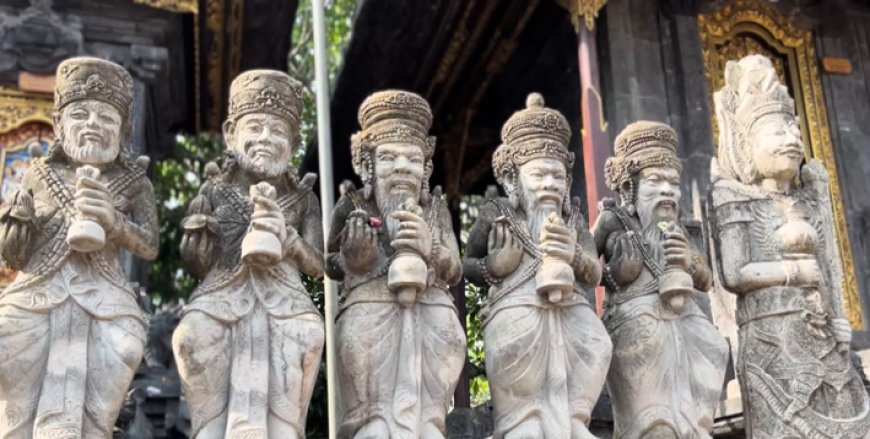
Panca Tirta (Source: Private Collection)
The existence of Silayukti Temple is closely related to the existence of Mpu Kuturan who was able to organize Balinese life, especially in religious beliefs, because initially the island of Bali had many sects with various beliefs so it was prone to conflict, that's why he was assigned to organize it so that it was known as the Pakraman village which had a temple. Heaven Three. He is dedicated to the development of Hinduism teaching how to establish places of worship such as Kahyangan Jagat and Kahyangan Tiga in Pakraman Village in Bali.
Throughout his life, he underwent Sukla Brahmacari or did not marry and had no children. Mpu Kuturan, has full confidence in the law of karma because every good deed will produce good results, and vice versa. Mpu Kuturan is not the name of a figure, but the name of a position. The figure of Mpu Kuturan who is well known in Bali is Mpu Rajakerta, whom all people consider to be brothers, given the title of Pandita expert or Brahmanasista in the Manawa Dharmasastra literature.
Mpu Rajakerta himself was originally a knight who served as senapati Kuturan in the government of Guna Prya Dharma Patni (Prabu Airlangga's younger brother) and Udayana Warmadewa served as Chairman of the Kiran Ijro Makabehan Pekira Council which was the advisory board of all senapati, Pandita Dangacarya and Dangupadyaya.
This will be a very good opportunity, so that he can deepen his devotion to the Balinese people. After no longer serving as senapati of Kuturan, he became the Bhagawanta of the Kingdom of Bali and was given the title Mpu Kuturan, assigned to Padang (now Padang Bai) where the Mpu built the mosque, now known as Silayukti Temple.
Mpu Kuturan's aim in teaching the worship of God as Dewa Tri Murti is to strengthen the people in carrying out Utpati, Stithi and Pralina efforts. Utpati means being active in creating something that should be created. Stithi means truly maintaining and protecting something that should be maintained and protected. Padangbai people are very devoted and lucky to have him.
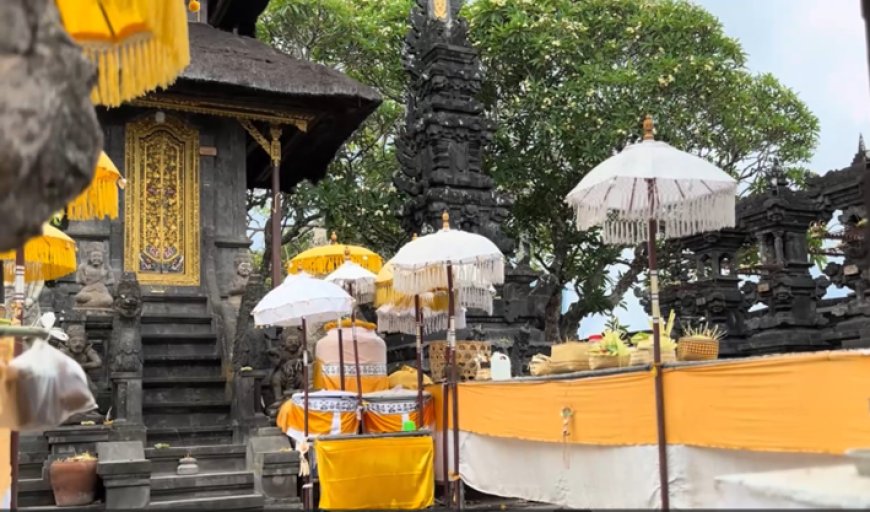
Silayukti Temple Pelinggih (Source: Private Collection)
Silayukti Temple has 4 prayer areas, namely Tanjung Sari Temple, Telaga Mas Temple, Silayukti Temple, and Payogaan Temple. The distance between Tanjung Sari Temple and Silayukti Temple is around 100 meters. Tanjung Sari Temple is a holy place to worship Mpu Beradah, Mpu Kuturan's younger brother. When Mpu Beradah came to Silayukti to meet Mpu Kuturan, Mpu Beradah stopped at the temple. This temple is called Tanjung Sari Temple.
Telaga Mas Temple is an altar and on the altar there are two pelinggih, namely a gedong and a bebaturan. It is located to the north of Silayukti Temple, about 20 meters away. It is said that the location of the temple was once a garden where Mpu Kuturan bathed.
The existence of this Payogan temple became generally known since 2005. Initially, relatively few people knew about this temple, because its location was upstream and relatively hidden. However, recently quite a lot of pamedek have come forward to pray. This temple is believed to be a place of meditation for Mpu Kuturan.
The existence of this temple not only enriches the Pura Luhur Silayukti Temple complex architecturally, but also carries history and special meaning as a place related to Mpu Kuturan's spiritual activities. Thus, this article not only functions as a source of information about religious destinations in Bali, but also as a window that opens insight into the complexity and depth of spiritual values contained in Balinese cultural heritage, where Mpu Kuturan's role provides a solid foundation for religious life. sustainable.




















